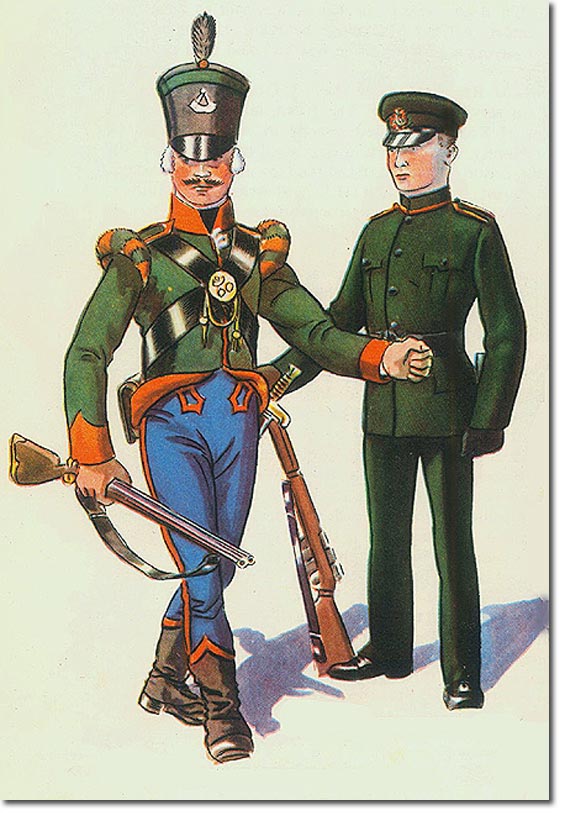|
|

 |
|
This illustration by Frank Wilson was published in his book 'Regiments at a Glance' around 1953. At that stage the KRRC was still a regiment in it's own right but brigaded with the Rifle Brigade. In 1958 they became the 2nd Battalion of the Green Jackets but retained their identity and uniform. By 1968 they had become one regiment and that was the end of the cap badge and the red piping.
The rifleman on the left belonged to the 5th Battalion which was especially raised by Lt-Col Baron de Rottenburg in 1798 and they were the first to wear green uniforms. The men were foreigners and followed the continental custom of having moustaches, whereas British soldiers at that time were clean-shaven. By 1918 the whole regiment was dressed in green, with red facings. And by 1924 they were all British soldiers. The soldier of the 1950s wears no.1 dress which was re-introduced a few years after World War 2 to bring colour back to the British Army. Service dress at this time was still battledress which did not look good on ceremonial occasions. The uniform was based on the former frock jacket that was discontinued at the beginning of the 20th century. It is still worn today by the Green Jackets but without the red piping around the collar and the edge of the shoulder straps. The soldier's cap has the bronze Maltese cross badge with red cloth backing. Unfortunately the belt is concealed so we cannot see if he has the brass snake clasp that was worn in full dress prior to World War 1. The Green Jackets today (2011) wear a white metal snake clasp. He is armed with a .303 Lee Enfield which was used throughout World War 2. The bayonet for this rifle was an 8 inch spike which must at first have caused some amusement when the order was given to 'fix swords'. The rifle-sling is still of black leather but here appears to be tight, not hanging loose as before. In 1954 the .303 was replaced by the 7.62mm SLR. |
Armed Forces | Art and Culture | Articles | Biographies | Colonies | Discussion | Glossary | Home | Library | Links | Map Room | Sources and Media | Science and Technology | Search | Student Zone | Timelines | TV & Film | Wargames
